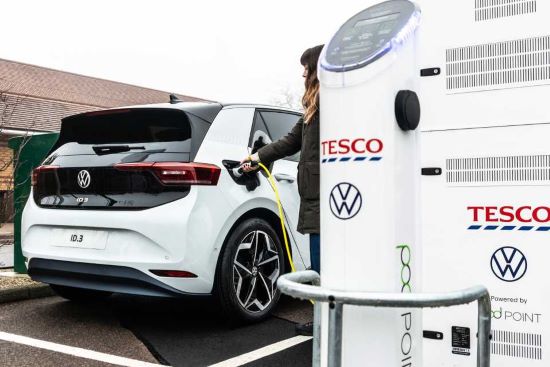Futureproofing what the industry builds means connecting all new developments to the right infrastructure to enable a transition to net zero transport use, says Hannah Vickers of Mace.
Ensuring that what we build is fit for the future is obviously an area where construction as a sector has a huge amount to contribute. It’s also a key intersection where our post-Covid lifestyles and our net zero ambitions intersect.
How much and how will we travel in future is the million-dollar question in both cases – but do we or can we possibly yet have an answer? Will we be too late to act on net zero by the time we know how commuting patterns will settle? Decisions here can have one of the largest impacts on the UK’s carbon footprint but are also where we possibly face the greatest uncertainty in all of our decision making.
Regardless of our views on the future, there are clear ‘no regret’ actions we can still proceed with confidently, such as committing to EV charging points on all new homes through the Future Homes Standard, or the work currently being carried out by Arcadis to advise and install an EV charging network on 400 Tesco stores nationwide.
Other choices are more challenging or controversial and will require us to develop new decision-making frameworks, such as how we properly incorporate the connectivity of developments - and so the future carbon emissions generated by travel in occupancy - into investment appraisals.
Helping clients come to an informed decision
I doubt there would be many who argue against the logic of doing this, however understanding the appropriate weighting to reflect the value added through the eyes of consumers or shareholders is a complex modelling exercise still in its infancy. Will our customers pay more for this level of connectivity? How much do our shareholders actually value this and will they choose this development over and above one which is seemingly more profitable?
Even for public sector stakeholders, the state of the public sector finances will set a very different backdrop to these sorts of decisions. It’s not that these topics are things we shouldn’t be grappling with. They absolutely are – it’s just amongst one of the more wicked and messy areas of the net zero debate that will take careful consideration and enhanced capabilities to land on the right answer; or at least an informed decision.
Again, this is an area where our sector has a central role to play. A good example is the work Atkins has carried out on the Portsmouth master plan, deploying digital modelling and cross-sector expertise to scenario plan and demonstrate options to give the client the best chance of making an informed decision in the best interests of their citizens.
This type of approach could become more mainstream when we start to ask the bigger questions of government policy – will we undertake transport modelling on the basis of net zero carbon alongside congestion and how do we factor human behaviour into this?

Taking account of net zero in decision-making
There is progress on this area already, with the conditions we now see being placed on departmental finance settlements which demand that decision-making takes account of net zero outcomes, but given the timelines involved in infrastructure decision-making it will inevitably take longer for this to filter into asset strategies and the resulting programmes that industry will see.
Undoubtedly there is a role for the much-debated data-centric engineering here, as we further develop our ability to coordinate the relevant data sets and use tools such as the National Digital Twin to support our decision-making. We hope the development of this over the next few years will accelerate our capabilities as an industry in the UK and for exports to demonstrate the scale of the opportunity we have here. As is often the case, the trick will be supporting our engineers to blend the technical decision making with the practical realities of how we can change behaviours in order to achieve workable solutions.
In reality, alongside the role of technology there is perhaps a greater role for spatial planning and regional leadership to work beyond our normal silos and pose direct challenges to the asset owners and operators who will need to collaborate in order to achieve a single integrated net zero carbon plan for place. The complexity of aligning strategy, governance and financing here will test even the most ambitious of our metro mayors!
Adapting to a much faster rate of change
This isn’t something that our industry can decide on its own, but it is also something we cannot ignore. Take, for example, the ongoing debate on road user charging and how this system might need to adapt in order to function in a sustainable way long term. For us it’s about being aware of and able to adapt to those changes as they emerge – probably a much faster rate of change than we have seen in our infrastructure markets in decades.
For industry, ConstructZero will be focusing on developing these capabilities to work in support those making decisions - the financiers, governments and regulators. Our industry’s role as a trusted partner has never been more important in bringing to bear what only we can provide as world leading consultants and advisors to our clients who are grappling with the challenge of change.
Hannah Vickers is the chief of staff for Mace and workstream lead for the Construction Leadership Council’s ConstructZero initiative.

